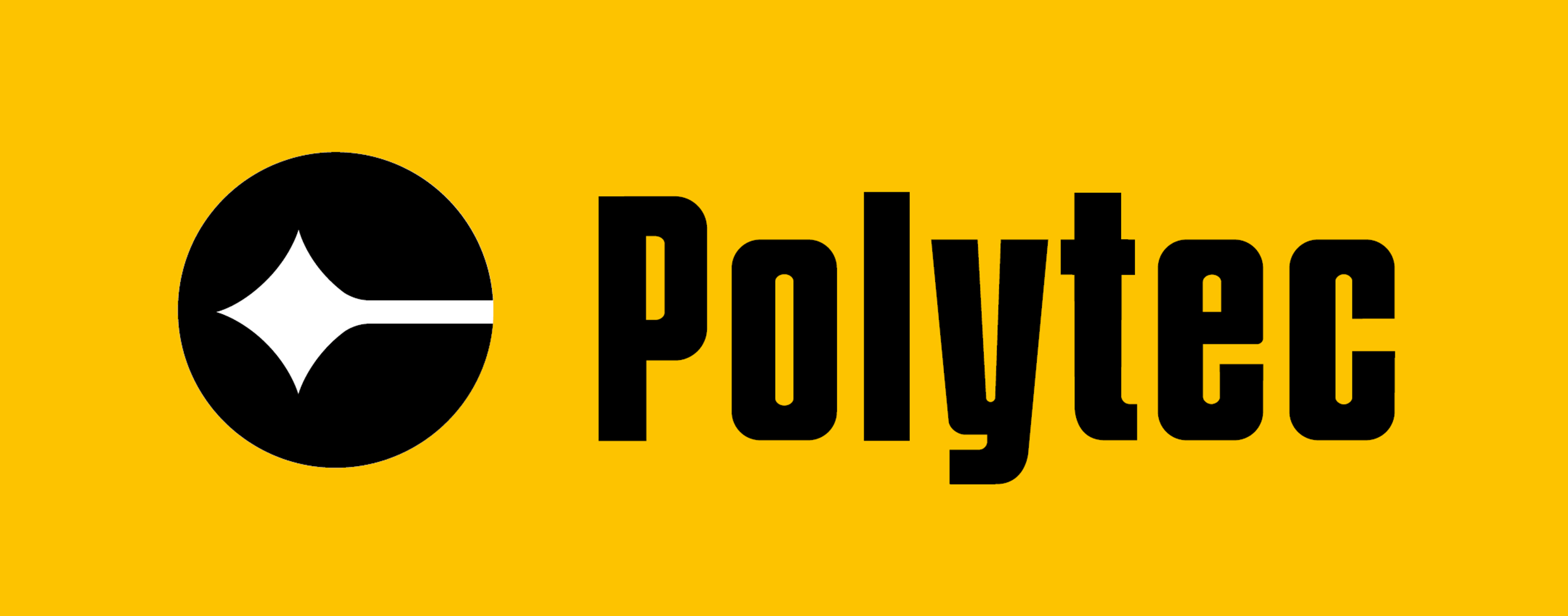Project Description
Lamdamap 15th International Conference & Exhibition
14th – 15th March 2023, The University of Edinburgh, UK
14th – 15th March 2023 at The University of Edinburgh, UK
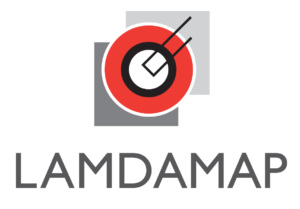
The 15th International Conference and Exhibition on Laser Metrology, Coordinate Measuring Machine and Machine Tool Performance, (LAMDAMAP 2023) will be organised by euspen drawing together many of the worlds distinguished scientists and engineers from all areas of science, engineering and medicine; representing both industry and academia.
Advanced machine tool metrology supports superior part production; enabling, understanding and tracking of baseline performance machines. Whilst the trend towards nanometre level surfaces finishes and features progresses, matching both form and finish coherently in complex parts remains a major challenge.
This conference will take place at The University of Edinburgh and will focus on Metrology in New Fabrication Techniques; New Developments in Measurement Techniques; Novel Manufacturing Technologies & Machine Tools; Performance Evaluation for Machine Tools & CMMs; Roughness & Machine Tool Standards; Accuracy and Performance Evaluation of Industrial Manipulators; Integrated Metrology in New Fabrication Techniques and Machine Learning for Metrology and Precision.
The organising committee and local hosts for euspen‘s 15th Lamdamap Conference and Exhibition are :- Prof. Andreas Archenti, KTH Royal Institute of Technology, SE; Prof. Rebecca Cheung, University of Edinburgh, UK; Prof. Andrew Longstaff, University of Huddersfield, UK; Dr Philip T Martin, AWE, UK and Dr Nan Yu, University of Edinburgh, UK.
The 15th Lamdamap Conference meeting chair is Prof. Andrew Longstaff from the University of Huddersfield, UK
Networking is the key to the success of euspen’s events, and the LAMDAMAP event is designed to allow delegates, speakers, and exhibitors alike the ability to meet and discuss issues of immediate relevance to the area of machine tool metrology. To stimulate such cross fertilisation of ideas and experiences, in addition to the numerous on-site opportunities to have in-depth discussion with peers, delegates are able to attend a networking dinner.
Delegates will also be able to access the exhibition that runs alongside the conference, where they can come into contact with the cream of technology and service suppliers that represent the key strategic partners that manufacturing companies must access in order to reach their machine tool metrology goals.
The production of more and more accurate and smaller and smaller components relies and indeed is underpinned by advanced machine tool metrology, which facilitates the assessment of performance of machines. This requirement becomes more pressing as the drive in industry towards the greater use of nano-scale surface finishes and features gathers pace. It is vital that form and finish is produced consistently in small complex parts, and it is here that the key challenge for advanced metrology solutions exists today.
Therein the poster sessions, exhibition and time allocated for discussing presentations at the event, will allow the next generation of manufacturers to utilise all available advances in measurement techniques to meet tomorrow’s specifications.
Conference Themes
- Metrology in New Fabrication Techniques
- New Developments in Measurement Techniques
- Novel Manufacturing Technologies & Machine Tools
- Performance Evaluation for Machine Tools & CMMs
- Roughness & Machine Tool Standards
- Accuracy and Performance Evaluation of Industrial Manipulators
- Integrated Metrology in New Fabrication Techniques
- Machine learning for Metrology and Precision
Submission Guidance
When using the online paper submit abstract button (below) for submitting your full paper or abstract, you will be requested to create a profile which is separate to your euspen membership profile information. Once you have completed your profile you will be required to upload your file.
Short Abstract Submission
Abstracts are expected to describe original work, previously unpublished and should indicate new and significant advances and their importance. Initially short abstracts comprising of approx. 300 words in length should be submitted online using the template provided.
Following review of short abstracts, authors will be provided with instructions for submitting a full paper or extended abstract.
Full Paper Submission
Submitted papers should be a maximum of 10 pages of A5 (as per the above template). Papers are expected to describe original work, previously unpublished and should indicate new and significant advances and their importance. Papers must be submitted in WORD or PDF format using the template provided.
On acceptance of the paper, authors will be notified and provided with instructions for presentation (oral/poster).
Abstract Submission (Poster Presentation)
Abstracts should be a maximum of 4 pages of A5 (as per the above template). Abstracts are expected to describe original work, previously unpublished and should indicate new and significant advances and their importance. Abstracts must be submitted in WORD or PDF format using the template provided.
On acceptance of the abstract the authors will be notified with instructions for their poster presentation. Abstracts will only be considered for poster presentations.
Key Dates:
28th October 2022 : Short Abstract Submission Deadline
9th December 2022 : Paper Submission Deadline (Full & Abstract)
19th December 2022 : Delegate Registration Opens
6th January 2023 : Scholarship Application Deadline
20th January 2023 : Notification of Presentation Award (Oral/Poster)
Conference Fees
- £285 + VAT – euspen Student members*
£395 + VAT – euspen members
£495 + VAT – euspen Non-members
£595 + VAT – Supporter/Exhibitor
£45 + VAT – Student Networking Dinner
£45 – Conference Proceedings
*Student members fee is not inclusive of the networking dinner.
All speakers and presenters must register for the conference using the appropriate delegate fee.
Exhibitor Infomation
If you would like to exhibit at Lamdamap, your registration fee would include:
- 1 x table (6ft trestle table)
- 2 x chairs
- Space for 2 roll-up banners
- 5 minute industry presentation within the programme. We would request this is not a sales pitch but more related to organisational information and real-life applications of products etc.
- 1 x delegate registration (includes the networking dinner and access to presentations)
Exhibitors
Insphere was founded in November 2013 and initially provided consultancy and training services using dimensional coordinate measurement data to improve manufacturing outcomes.
The Company built a strong relationship with a number of major businesses in the industrial manufacturing industry, including customers such as Airbus, BAE Systems, JLR and Rolls-Royce. During this period, a clear need for new technology emerged and the Board decided to establish a product-focussed business strategy, developing a first prototype product of IONA in early 2019. IONA is a patented sensor and software technology solution which provides industrial robots used in product manufacturing accurate, real-time positional awareness, improving their efficiency, accuracy and performance.
Use of industrial robots are prolific across a wide range of sectors such as automotive, aerospace and white goods manufacture. Despite being a tool to increase productivity and reduce manual labour, there is still a significant amount of human resource required to maintain performance and update processes as changes are made to products manufactured by the industrial robots. In addition to the human resource input needed, a significant amount of waste is generated by the industrial manufacturing process using robots due to trial parts being used (and scrapped) to determine manufacturing system performance and product quality control.
Insphere’s team of engineers and other specialists are pursuing an ambitious roadmap and continue to engage closely with academia and industry to ensure that the technology is aligned to manufacturing requirements, now and in the future.
For more information, visit www.insphereltd.com
Manufacturing non-contact measurement systems for over 50 years, our equipment measures Vibration, Acceleration, Displacement, Speed, Length, and Surface features such as flatness, roughness, and step heights. Our equipment range allows for analysis of different size, shape, and material from micron to macro. Laser vibrometers, laser velocimeters, and surface metrology.
For more information, visit www.polytec.com/eu
Registration
We are so excited to be back in-person running our first Lamdamap Conference since the pandemic and look forward to welcoming you to Scotland.
Please register using the appropriate registration form.
euspen complies with international VAT/IVA/VAT MOSS rules and as such the relevant Standard VAT dependent upon your Country (UK or EU) will be applied to delegate registration invoices. You should read the following rules and select Registration Form A or Registration Form B dependent on which category you are in.
Select Registration Form A if any of the following applies:-
- You are based within the UK or Europe
- You are a private individual or organisation/business
- You are representing a European company that is not VAT/IVA registered
- This form will apply UK VAT (20%)
Select Registration Form B if any of the following applies:-
- You are representing a business/organisation outside Europe
- This form does not apply VAT. This is in accordance with VAT exempt rules.
Keynotes & State-of-the-art
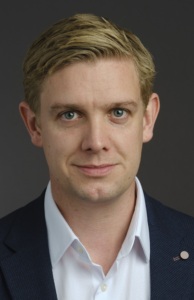
Prof. Adam Stokes
The University of Edinburgh, UK
Soft robotics for hard problems
In this talk I will explore the fundamental science which underpins fluidic technologies, and I’ll describe how I borrow ideas from microprocessor design to develop systems and methods which allow system designers to engineer integrated biomedical devices which incorporate fluidic, electronic, and optical elements.
Two emerging and closely linked fluidic technologies—microfluidics and soft-robotics—hold particular promise for providing engineered-solutions in the development of biomedical devices: microfluidic systems have application in point-of-care diagnostics, and soft-robotic systems have application in assistive-robotics. Both technologies involve the control of fluids to engineer systems which contain mechanical, optical, electrical, chemical, and thermal sub-systems. Microfluidic systems are most-often implemented using 3D moulds of elastomers (soft-lithography), and in our pioneering work on soft-robotics we borrowed this technique to enable us to make elastomeric mechanical systems.
The relatively low-complexity of current systems is limited by our ability to “engineer” with them. The conventional engineering approach is to break a problem down into its constituent elements using hierarchy and abstraction, before using simulation to validate the design prior to manufacture. This approach relies upon the scientific understanding of the blocks that are being abstracted. Both microfluidics and soft-robotics involve an interplay between engineering and scientific disciplines, and across length-scales.
We have developed a hierarchy of abstracted “blocks” which can be rigorously studied in a scientific manner, and which system-designers can combine into robust integrated systems. Experimental-studies are informing the development of a new fluidic hardware description language and associated software tools which aim to enable the rapid design, simulation, and fabrication of significantly more-complex, integrated, fluidic systems than are currently available.
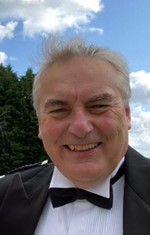
Prof. Alistair Forbes
Data Science Department, National Physical Laboratory, UK
Traceable coordinate measurement
The primary task of form and tolerance assessment in precision engineering is to estimate how close a manufactured workpiece is to its ideal geometry, as specified by a technical drawing or CAD specification. Traditionally, such assessment was made using hard gauges, but in recent decades coordinate measuring systems such as coordinate measuring machines (CMMs) are used extensively in industry for this task. While the traceable calibration of a hard gauge is often a straightforward task, establishing that the results derived from coordinate data are traceable to the metre is much more difficult. A necessary component of any statement of traceability is an evaluation of uncertainty associated with the measurement results. However, the evaluation of the uncertainty associated with CMM data is not straightforward. CMM measurement results are subject to a large range of influence factors including kinematic errors, probing effects and environmental effects, that are difficult to quantify. Coordinate metrology also has a significant computational component and issues to do with software correctness and its numerical accuracy are also important. In this talk, I will discuss various approaches to evaluating CMM uncertainty that have been developed in a number of national and international projects. In particular, I will look at the outputs of a recently completed European project on CMM uncertainty evaluation and also consider uncertainty evaluation for coordinate measurement using a comparator approach.
Biography
Since joining the National Physical Laboratory (NPL) in 1985, Alistair Forbes has carried out research in mathematical and statistical modelling, algorithm design, uncertainty evaluation, numerical software development and validation with applications to metrology. Much of his work has been in the area of coordinate metrology, often undertaken in European collaborative projects, including
- Generation of test data for coordinate metrology software
- Parametrization of geometric elements
- Reference software for fitting geometric elements according to the Chebyshev criterion
- The Virtual CMM
- CMM calibration
- Traceability in computationally-intensive metrology
- Standards for the evaluation of uncertainty of coordinate measurements in industry https://eucom-empir.eu
He is a Fellow in the Data Science Department at NPL and a Visiting Professor at the University of Huddersfield and at the University of Strathclyde, UK, and a member of ISO TC 213, Geometric Product Specification
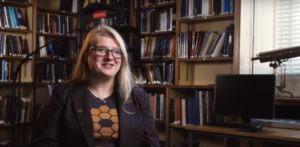
Dr Olivia Jones
UK Astronomy Technology Centre, Royal Observatory, UK
James Webb Space Telescope: Unlocking a new window on the universe
The James Webb Space Telescope (JWST), launched from French Guiana on Christmas Day 2021, is the biggest space astronomy project for a generation. JWST, with its complement of near & mid infrared instruments (1 – 28 microns) offers an unparalleled combination of sensitivity and diffraction-limited performance, has opened a new window on the universe. The telescope will look for the first galaxies that formed and evolved in the universe; how stars and planets form, and for the chemical signatures of life on distant planets. JWST has a gold-coated 6.5 m mirror which is protected by a sunshield that’s the size of a tennis court; these were specially engineered to fold up and fit within the confines of Ariane 5 for launch. After deploying in space on its month-long journey to L2 and alignment and calibration of the mirrors and instruments, JWST started science operations in summer 2022. Here I will give an overview of JWST, the key phases during commissioning the science instruments, and highlights of the highly anticipated expected early science results from JWST.
Biography
Dr Olivia Jones is a STFC Webb Fellow, based at the UK Astronomy Centre at the Royal Observatory Edinburgh. She received her PhD from the Jodrell Bank Centre for Astrophysics in 2013, and then worked at the Space Telescope Science Institute (the home to Hubble and Webb mission operations) in America prior to moving to Scotland. She is an expert in infrared astronomy and researches the beginnings and ends of stellar evolution in nearby galaxies. She is currently a member of the Webb instrument team and supported its launch, commissioning and first observations in 2022.
Luca Rosario Buonocore
CERN, CH
Robotic solutions for remote maintenance and quality assurance
Intelligent robotic systems are becoming essential for space applications, industries, nuclear plants and for harsh environments in general, such as the CERN particles accelerator complex and experiments. Robotics technology has huge potential benefits for people and its ultimate scope depends on the way this technology is used. In order to increase safety and machine availability, robots can perform repetitive, unplanned and dangerous tasks, which humans either prefer to avoid or are unable to carry out due to hazards, size constraints, or the extreme environments in which they take place. Nowadays, mechatronic systems use mature technologies that allow their robust and safe use, even in collaboration with human workers. In this presentation, the current status of the robotic activities performed by the CEM group at CERN is presented. Several robotics solutions have been applied in the past years at CERN, as well as custom made robotic devices. New ideas and solution could come in the close future to increase safety of CERN personnel decreasing radiation dose taken. Current and future research and development in robotics done at CERN are described, as well as the results from the commissioning of various novel robotic controls.
Biography
Luca Rosario Buonocore received a M.Sc. degree in Electronic Engineering from University of Naples Federico II, Naples and received the Ph.D. degree in computer and automation engineering from the University of Naples Federico II, Naples, Italy, in 2015.
He started as Research Fellow at European Organization for Nuclear Research (CERN). Currently, he is a Research Staff with the RD Robotic Division of Mechatronics,
Robotics and Operations section at CERN, Geneve, Switzerland. His main research interests include mechatronic design of novel robotic solutions, such as mobile robotic platforms and ultralight robotic arms for a real manipulation for harsh environment application.
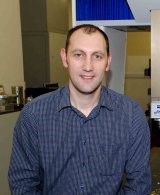
Dr Simon Fletcher
University of Huddersfield, UK
ISO machine tools standards, progress report
This presentation will provide a short overview of the hierarchy of ISO technical committee TC39 and its sub committees working on machine tool standards. It will also cover the work programme of Sub-committee 2 focusing on Test conditions for metal cutting machine tools including a progress update of standards currently being worked on by the committee.
Biography
Simon Fletcher is a Principal Enterprise Fellow working within the Engineering Control and Machine Performance group (ECMPG), part of the Centre for Precision Technologies at the University of Huddersfield. With more than 25years’ experience in machine tool metrology including error identification, avoidance and compensation, he has helped establish the groups international reputation for research into machine tool precision.
Simon is currently working on collaborative research with industry primarily involving detailed geometric and thermal performance assessments for precision manufacturers. Recent work also includes machine tool and machining process simulation. This follows the co-creation of new Modular Machine and Process simulator software as part of a recently completed InnovateUK project. The combination of machine tool metrology and simulation work is now being used as part of a EPSRC RiR with the High Value Manufacturing CATAPULT, specifically working on traceable on-machine inspection on large machine tools in collaboration with the Nuclear AMRC.




